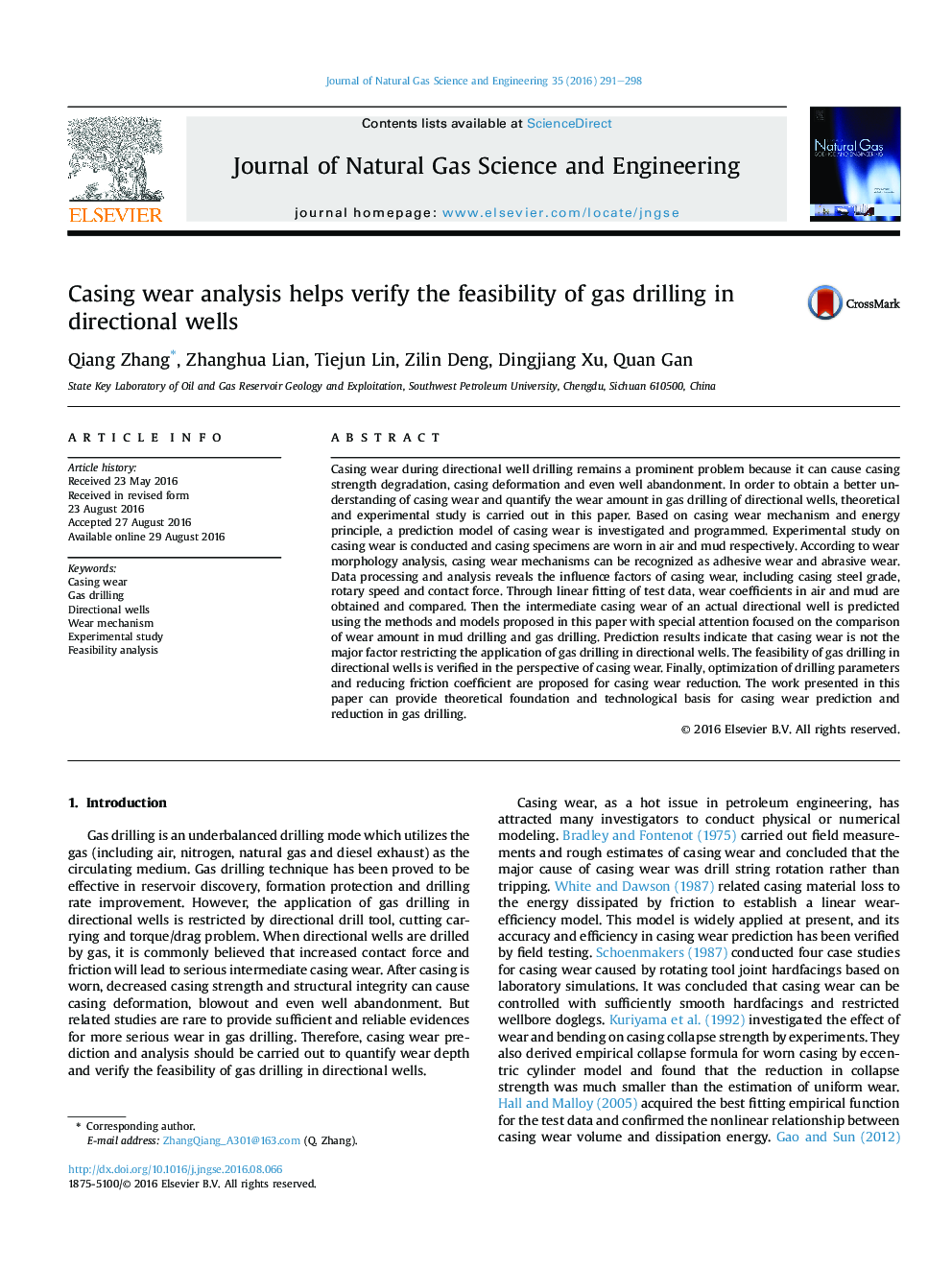| Article ID | Journal | Published Year | Pages | File Type |
|---|---|---|---|---|
| 1757023 | Journal of Natural Gas Science and Engineering | 2016 | 8 Pages |
Abstract
Casing wear during directional well drilling remains a prominent problem because it can cause casing strength degradation, casing deformation and even well abandonment. In order to obtain a better understanding of casing wear and quantify the wear amount in gas drilling of directional wells, theoretical and experimental study is carried out in this paper. Based on casing wear mechanism and energy principle, a prediction model of casing wear is investigated and programmed. Experimental study on casing wear is conducted and casing specimens are worn in air and mud respectively. According to wear morphology analysis, casing wear mechanisms can be recognized as adhesive wear and abrasive wear. Data processing and analysis reveals the influence factors of casing wear, including casing steel grade, rotary speed and contact force. Through linear fitting of test data, wear coefficients in air and mud are obtained and compared. Then the intermediate casing wear of an actual directional well is predicted using the methods and models proposed in this paper with special attention focused on the comparison of wear amount in mud drilling and gas drilling. Prediction results indicate that casing wear is not the major factor restricting the application of gas drilling in directional wells. The feasibility of gas drilling in directional wells is verified in the perspective of casing wear. Finally, optimization of drilling parameters and reducing friction coefficient are proposed for casing wear reduction. The work presented in this paper can provide theoretical foundation and technological basis for casing wear prediction and reduction in gas drilling.
Related Topics
Physical Sciences and Engineering
Earth and Planetary Sciences
Earth and Planetary Sciences (General)
Authors
Qiang Zhang, Zhanghua Lian, Tiejun Lin, Zilin Deng, Dingjiang Xu, Quan Gan,
